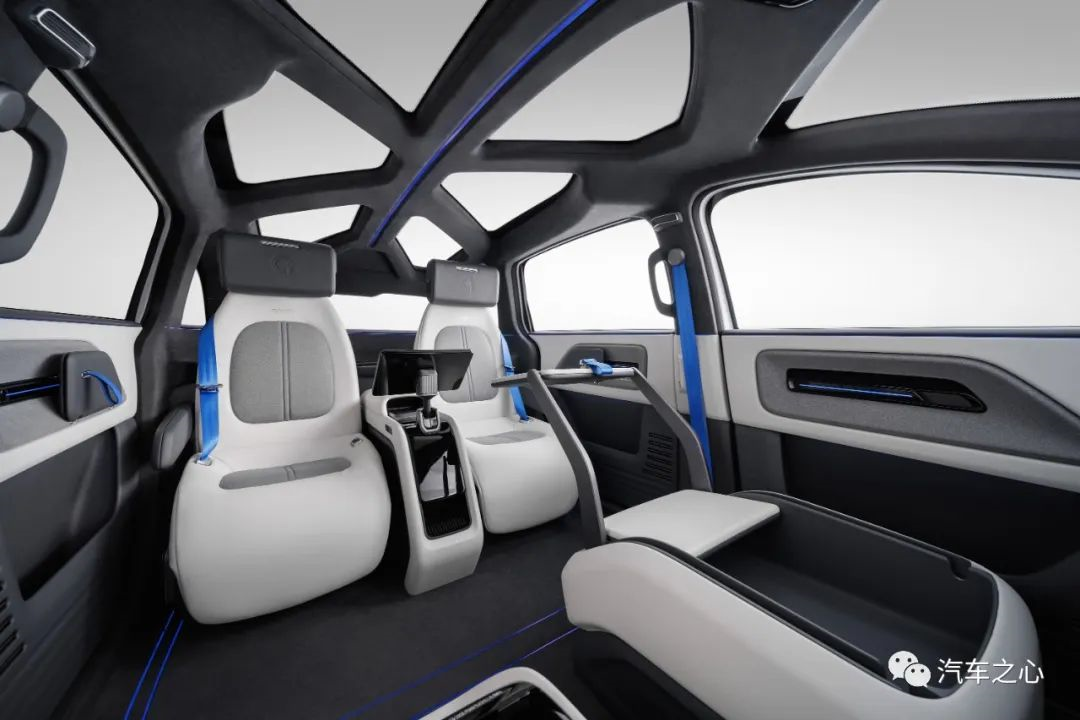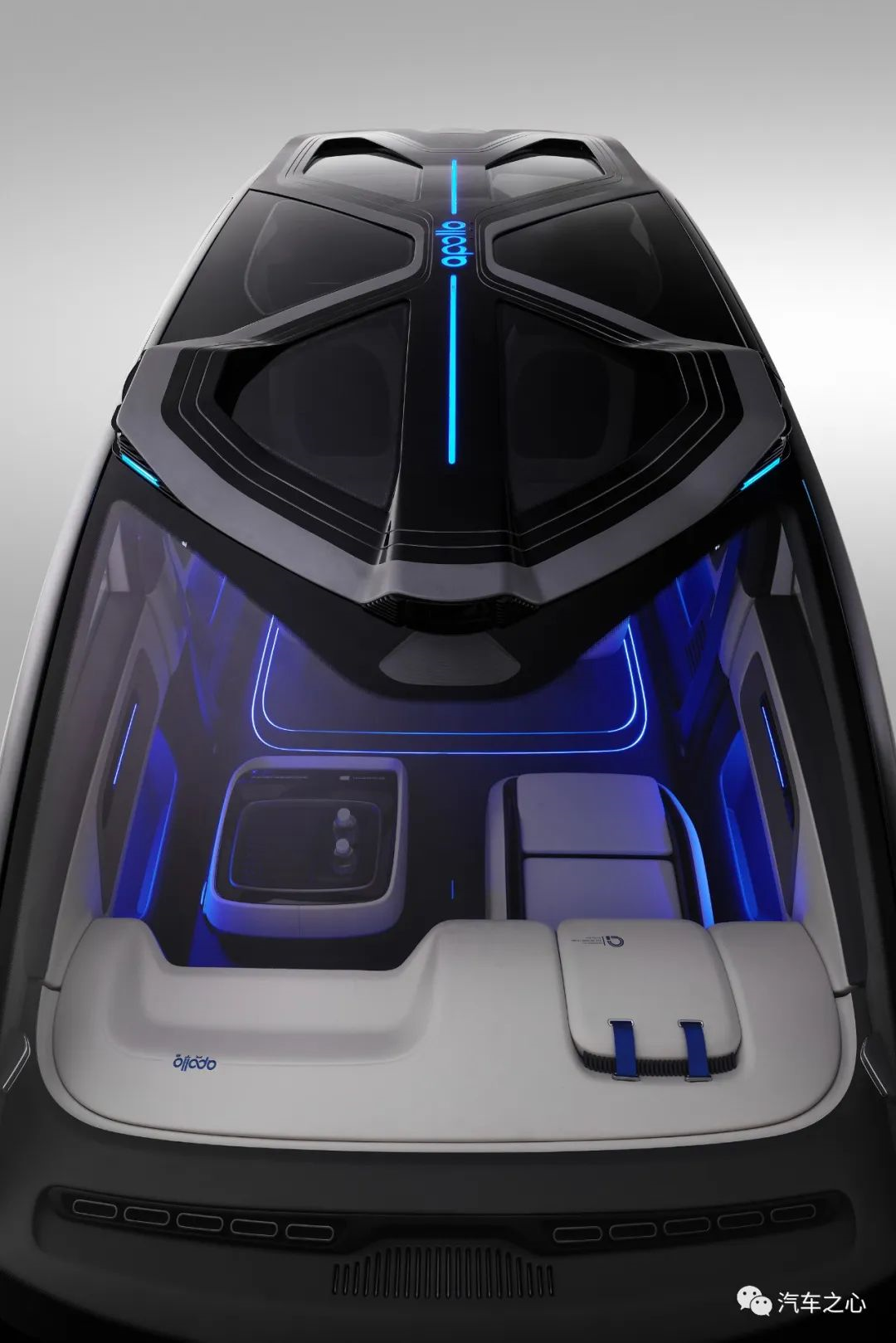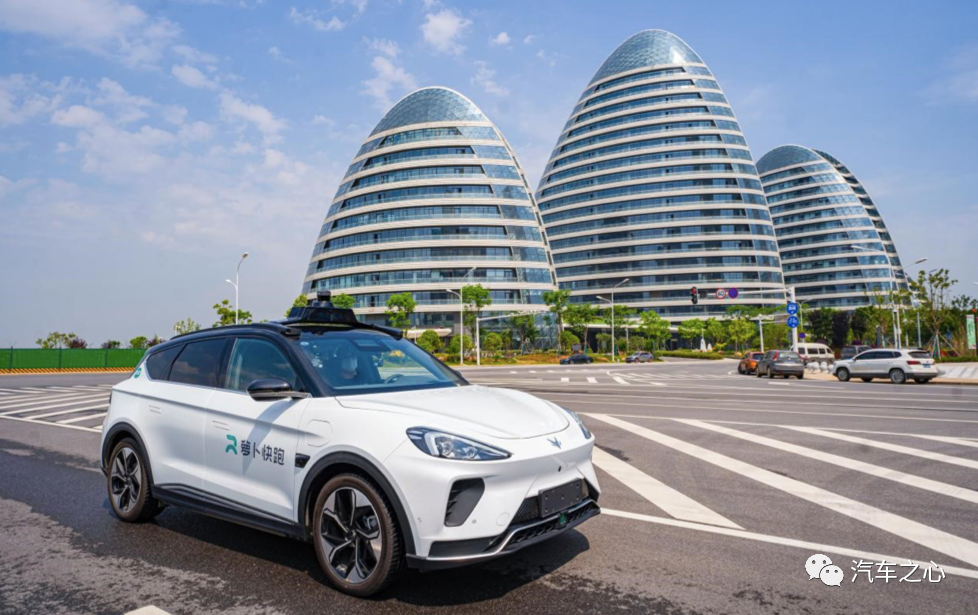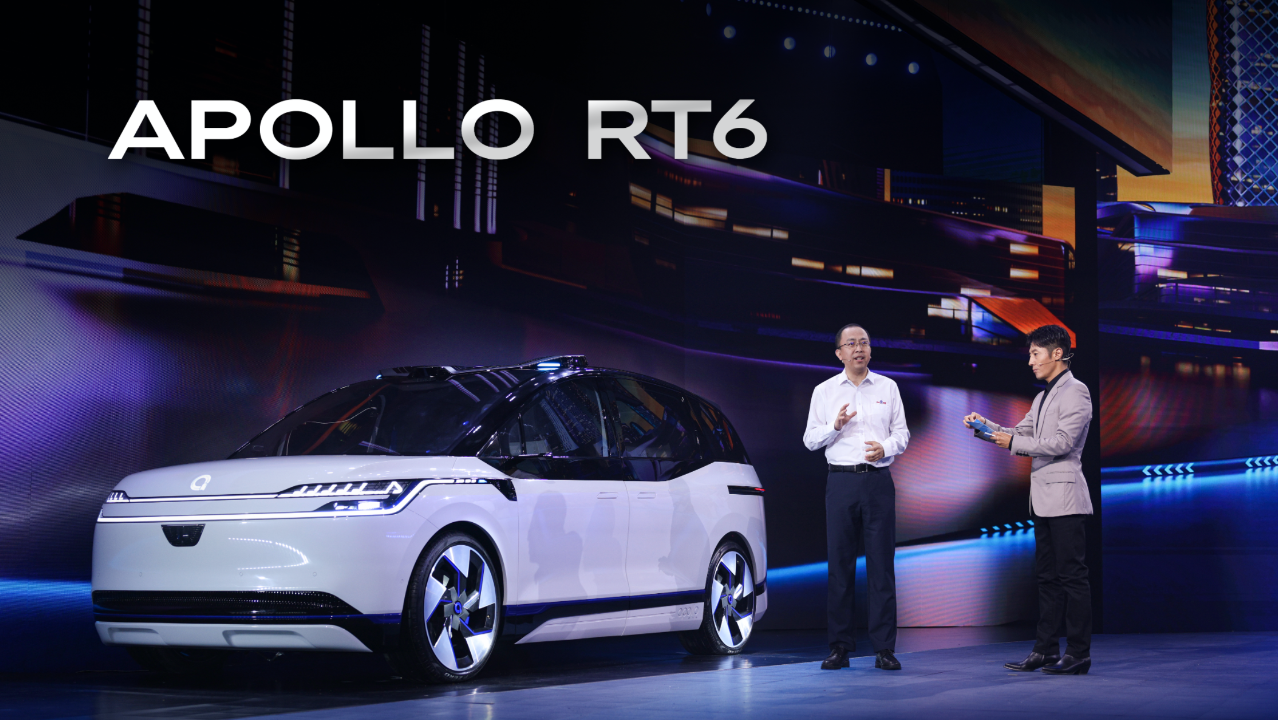Author: Jaz
There are two major annual events in the tech industry that you can’t miss.
One is the Silicon Valley Apple WWDC, where Apple showcases its latest technology to consumers through developers.
The other is the Baidu World Congress, a “hard-tech” event in China focused on AI, from cloud computing and digital humans to autonomous vehicles. Its technological content exceeds that of WWDC.
After all, in the “reserved program” of intelligent driving, Apple’s “Apple Car” hasn’t made any announcements, leaving only the new generation Carplay to support the scene.
In contrast to the slow progress of Apple’s car development, Baidu’s World Congress in 2022 has already witnessed the launch of Baidu’s sixth-generation production autonomous vehicle, the Apollo RT6.
The special feature of the RT6 is that it is the world’s first mass-produced autonomous vehicle that integrates AI technology and vehicle engineering based on forward design.
In other words, the RT6 is the first truly mass-produced autonomous vehicle in the world.
The RT6 has the characteristics of low cost, high quality, and high safety. With a total cost as low as 250,000 yuan, it also has Level 4 autonomous driving and the ability to drive autonomously on complex city roads. In addition, the vehicle’s fully redundant safety system ensures the absolute safety of the RT6.
The birth of the RT6 at Baidu was not accidental.
In 2015, Baidu released its first-generation technology verification product called “Xiaohong.” In 2016, Baidu’s self-driving technology was integrated into the Chery EQ and after that, Baidu cooperated with BYD, BAIC, and FAW in releasing autonomous vehicles, maintaining an annual update speed of “one update per year”.
For the past half century, “Moore’s Law” has been a guidepost for the semiconductor industry, referring to the doubling of the number of transistors that can be accommodated on integrated circuits about every 18 months, resulting in smaller size and lower cost.
In Baidu’s autonomous vehicles, “hardware is more powerful, and costs are lower” is also the Moore’s Law. As an example of the cost displacement between the fifth and sixth generations, in 2021, Baidu released its fifth-generation autonomous vehicle, Apollo Moon, costing 450,000 yuan and containing only two lidars.
In just one year, the Baidu’s sixth-generation autonomous vehicle, the RT6, equipped with 38 sensors, including eight lidars, and with a computing power of 1200Tops, has again reduced costs to 250,000 yuan. Calculated in this way, its cost reduction rate exceeds 50%.
From conception to production, the emergence of the RT6 has declared the end of the era of autonomous driving refitting vehicles.
What makes RT6 revolutionary?
The RT6 has a strong “Baidu flavor” both inside and out, continuing its bold, radical, and technology-rich style of unmanned vehicles.
In terms of its appearance, the RT6 is a combination of an SUV and MPV. The galaxy waistline that runs through the body creates an intelligent and simple body design, combining the exquisite appearance of an SUV and the spaciousness and side sliding door design of an MPV.


It is worth mentioning that many unmanned vehicles currently visible are modified from SUVs and cars. However, when passengers ride in these models, the flat-opening doors are more likely to cause safety accidents when pushed outwards. Therefore, based on user needs, Baidu has created an electric sliding door for the RT6, which not only facilitates passengers getting on and off the car but also ensures their safety.
In addition, the RT6 also has two “details” that show great care and thoughtfulness. One is hidden in the headlights. The RT6 has a unique language of lights, incorporating identifiable and interactive light language design. The other is hidden in the sunroof. The RT6 uses a roof-bone sunroof structure and a high-integration design of a top-cover sensor kit, which not only beautifies the body but also widens the FOV of the roof and resolves the controversial “laser radar placement” issue.

The most significant selling point of the RT6 is its fully unmanned cabin design.
The RT6’s cabin design fully demonstrates the flexibility of an unmanned vehicle, providing optional configurations for unmanned driving, with a steering wheel and non-steering wheel mode available for the driver’s seat.Meanwhile, the entire front space also provides modular options. The front seat can be equipped with an office desk, turning RT6 into a mobile office. Similarly, by adding options such as a game console or vending machine, it can become a more user-friendly unmanned vehicle.
From this perspective, a true intelligent car is not just a computer on wheels, but also a treasure chest on wheels. The definition of an unmanned car should be based on individual user needs.
In terms of autonomous driving, the hardware and software levels of the RT6 have reached the “highest in history”, featuring a total of 38 sensors, which is Baidu’s latest understanding of mass-produced unmanned vehicles.
The 38 sensors consist of 8 LiDARs, 6 millimeter-wave radars, 12 ultrasonic radars, and 12 cameras. On top of this, the latest generation of Baidu Apollo unmanned driving system is installed, giving RT6 the ability to drive unmanned on complex city roads.
RT6’s hardware assembly highlights the number and layout of LiDARs. The vehicle is equipped with 8 LiDARs, with 4 long-range LiDARs arranged on the roof in the concept design, and 4 blind-spot LiDARs around the body. The 8 LiDARs have won first place in the autonomous driving arms race.
The number of LiDARs in the entire autonomous driving industry is not the same. For example, Waymo’s Pacifica operating vehicle, which is equipped with the fifth-generation autonomous driving platform, is equipped with 5 LiDARs. Last year, the unmanned driving car developed jointly by Waymo and Zeekr was still in the conceptual design stage, and according to the promotional image released, the entire vehicle was equipped with six LiDARs.
As we all know, LiDAR, as the “eyes” of autonomous driving, is one of the main weapons of ensuring the safety of autonomous driving. Therefore, the 8 LiDARs on the RT6 will greatly ensure that the unmanned vehicle can easily handle the complex scenarios of Chinese city roads.
Secondly, the RT6 is equipped with a vehicle-level semi-solid-state LiDAR, breaking the tradition of the mechanical LiDAR of the past unmanned vehicles. The semi-solid-state LiDAR completely abandons the mechanical structure and eliminates the cumbersome mechanical devices such as rotating motors and scanning mirrors.
Therefore, even with the addition of 8 semi-solid-state LiDARs, the RT6 does not appear bulky, and this also makes the scanning accuracy of the RT6 higher, and the power consumption lower, meeting the requirements of vehicle-level regulations.And such a robust hardware like RT6 will soon hit the road. According to the news from Autohome, Apollo RT6 will be put into small-scale operation on RoboTaxi in the second half of 2023, and gradually increase production from 10,000 to 100,000 vehicles according to the plan.
Behind Apollo RT6, a big leap in mass production of autonomous vehicles
The Robotaxi application field is ushering in a major transformation.
The development of Robotaxi can be roughly divided into three stages:
The first stage is from 2020 to 2022, limited areas are allowed to travel, and a safety staff is required in the passenger-carrying vehicle.
The second stage is from 2025 to 2030, where Robotaxis can travel all-weather and operate on complex road conditions.
The final stage is after 2030, where fully automated driving can be implemented even in bad weather conditions.
The arrival of RT6 is accelerating the historical process of Robotaxi, and the three stages required for Robotaxi to move forward are also being pushed by RT6: quality assurance, safety assurance, and cost optimization.
(1) Quality assurance
Previously, OEMs and autonomous driving companies mostly adopted “reverse design” to produce “autonomous vehicles”. Strictly speaking, these “autonomous vehicles” are only retrofitted cars based on existing products, and the matching degree between the automatic driving system and various sensors and the original mass-produced car model structure is not high. Therefore, the level of automatic driving is often restricted by the original car model, making it difficult to achieve the ideal effect of autonomous driving.
RT6 is the world’s first mass-produced forward-designed autonomous vehicle. Currently, except for the mass production that needs to be outsourced to other manufacturers, the entire vehicle design and research and development for RT6 are independently completed by Baidu. In this way, the vehicle architecture and automatic driving software and hardware of RT6 can achieve the highest compatibility.
(2) Safety assurance
The superior quality brought by forward design is the premise for guaranteeing the safety of the vehicle and traffic. However, from a more systematic perspective, autonomous driving needs to reserve sufficient technical space to achieve overall redundancy.
The so-called redundancy refers to the addition of surplus on the original system to enhance the judgment and reaction speed and safety protection of autonomous vehicles to road conditions. At present, most autonomous driving manufacturers mainly use “sensor redundancy”, but sensor redundancy alone is far from enough.
According to Autohome, RT6 has a sevenfold full redundancy entire vehicle system in terms of hardware, including architecture redundancy, sensor redundancy, computing unit redundancy, brake system redundancy, steering system redundancy, power supply redundancy, and industry-first dual 5G communication redundancy. At the same time, in terms of software, RT6 is equipped with a fault diagnosis and risk reduction system, integrating the entire vehicle and autonomous driving system.
How to interpret this system? For example, the Cruise autonomous vehicle had previously staged a drama of being stopped by a police officer and escaping on its own. However, this would not happen with RT6.Based on the hardware’s seven-fold redundancy and combined with a monitoring system, RT6 can realize safe control of the vehicle through deceleration, parking, or roadside parking, etc. by using different safety levels corresponding to different risks. Even if there are some problems beyond the range of automatic driving, RT6 can use “parallel driving” to solve the problem manually, intervene in the driving scenario manually, and then remotely take over the vehicle.
(3) Cost Issue
High cost has always been a difficult problem for the commercialization of unmanned vehicles. According to former Waymo CEO John Krafcik, a Jaguar equipped with Waymo’s autonomous driving system costs nearly one million yuan.
High cost is not in line with the pace of commercialization of unmanned vehicles. According to a “2020 Autonomous Driving Taxi” survey conducted by “Daily Economic News”, 50% of the respondents hope that Robotaxi can be priced similarly to traditional taxis.
RT6’s vehicle cost has been reduced to 250,000 yuan, which is only one-tenth of the industry price, once again refreshing the “cost price” of unmanned vehicles after Apollo Moon.
Calculating based on a cost price of 250,000 yuan, the monthly cost of RT6 without a driver is only 4,100 yuan, and once it is put into commercial operation on the RoboTaxi platform, the taxi price will be even lower than that of traditional taxis and ride-hailing services.
The reason why RT6 can ensure quality and safety while reducing costs is that RT6 completely abandons the original car modification mode of ordinary passenger cars and is specially customized and designed for operating scenarios. Non-essential configurations such as rear big screens have been deleted, while modular options that meet operational scenarios have been added to reduce the overall vehicle cost.
At the same time, as the domestic parts supply chain matures, the component cost of RT6, which is moving towards mass production, is also decreasing.
A typical case is the LiDAR. Currently, RT6 uses eight LiDARs and can still maintain a low cost. On the one hand, RT6’s mass production reduces the cost of LiDAR, and on the other hand, it is due to Baidu’s strategic cooperation layout.
Pin Products, Compare Operations, and Hold up the “Autonomous Driving” Banner
Comparing RT6 with other global unmanned vehicle products, you will find that Baidu is no longer in the same dimension as Waymo, Cruise, and Tesla.
At present, Waymo’s autonomous driving solution has an extremely slow update speed and is still based on the fifth generation autonomous driving suite released two years ago. Therefore, the Robotaxi operated by Waymo is still mainly modified by the Chrysler Grand Voyager and Jaguar I-PACE, and the integration of its autonomous driving platform into Zeekr’s unmanned vehicle in cooperation with Geely is still in the early stage of a single diagram.
The former can not be called a real unmanned vehicle, and the latter is still far away and not self-developed and designed like Baidu.| Compare with RT6, which has a 360-degree sensing system with 38 sensors, Waymo’s sensing ability is much weaker. Waymo’s perception solution on Zeekr is the same as Pacifica, still placing the main lidar on the roof.
| Moreover, RT6 can combine modular options for passengers’ personal needs, while Waymo’s overall taxi-style design makes the unmanned vehicle lose its “flexibility” and instantly become uninteresting.
| Turning to Tesla, although there are ambitions for Robotaxi, “only ambitions are left.”
| Tesla’s Robotaxi pursuit has been wavering until Musk revealed at Tesla’s Q1 earnings conference this year that Tesla Robotaxi will adopt no steering wheel or pedals in the future, and the earliest production time will be 2024.
| 2024 is still too late. Baidu has been working on unmanned vehicles for more than 9 years. According to plans, batches will be put into trial operation of L4 autonomous driving on robo-taxi in the second half of 2023, and the annual production capacity will gradually increase from 10,000 units to 100,000 units according to the operation deployment schedule.
| It is expected to achieve operation in 65 cities in 2025 and cover 100 cities by 2030. Tesla Robotaxi has obviously missed the best time window.
| Any description of unmanned vehicles that does not put them in a commercial operating scenario is irresponsible to them. As an unmanned proposition that must face passengers to be established, unmanned vehicles must be able to operate gradually in the operating scenario to achieve popularization.
| In fact, although China’s road traffic situation is more complicated, with denser crowds and takeaway boys who can make vehicles and pedestrians unprepared, Baidu is still a global leader in commercial operations.
| It is reported that Baidu’s robro-taxi has provided autonomous driving services for travel in cities including Beijing, Shanghai, Shenzhen, Guangzhou, and Wuhan. Among them, the four cities of Beijing, Wuhan, Chongqing, and Yangquan have achieved commercial operations. The real order volume of robro-taxi has exceeded one million orders.

| Soil that has been cultivated in advance will be more conducive to the large-scale operation of subsequent unmanned vehicles, allowing RT6 to run around consumers first. By contrast, Waymo and Cruise’s unmanned vehicle operation progress is far behind Baidu.By the end of 2021, Waymo One operates only in Phoenix, and San Francisco is just for testing without commercial operation. Cruise’s operations are limited to California and Arizona for passenger transportation.
Robotaxi is still a promising industry that requires further development. According to a report by McKinsey and CICC, it is expected that the global Robotaxi business market will exceed $2 trillion by 2030. The pioneers often reap the most significant rewards, just like Baidu’s right to define the era of autonomous driving.
The emergence of RT6 has opened a new chapter for the development of autonomous vehicle travel services.
In the past, autonomous vehicles have been confined to a small area of modified vehicles, with the most apparent progress being the replacement of higher-end finished cars. However, internal competition is like a “fight for the fish in the pond,” with no external extension space. As an AI technology and vehicle engineering deeply integrated autonomous vehicle, RT6 completely bids farewell to the era of modified cars and opens a new chapter for autonomous vehicle travel in China.
RT6 is one of Baidu’s “Acceleration” performances in autonomous driving, witnessing the iterative upgrade of Baidu’s “Fast and Stable” autonomous driving.
In 2021, Guidehouse released an autonomous driving ranking list. Baidu has been stably occupying the global “Leaders” camp for two consecutive years and becomes the only Chinese player on the list.
Currently, Baidu has released seven shared autonomous vehicles, including the first-generation autonomous vehicle, and has completed 32 million kilometers of road testing. In terms of operation, Baidu’s autonomous vehicle ride-hailing service, Luobo Kuaipao, has covered China’s first-tier cities such as Beijing, Shanghai, Guangzhou, and Shenzhen. It is predicted that Luobo Kuaipao will operate in 65 cities in 2025 and will cover 100 cities in 2030.
Regarding products, safety and operation, Baidu has become a “flag bearer” in the era of autonomous driving.
Looking forward, what will future travel look like?
One of the scenarios we can imagine is that modular and customizable RT6 will become a ubiquitous and on-demand travel partner, replacing human drivers with self-driving and offering lower costs and higher safety. With the further mass production of RT6, such a futuristic scene is no longer far away.
This article is a translation by ChatGPT of a Chinese report from 42HOW. If you have any questions about it, please email bd@42how.com.
